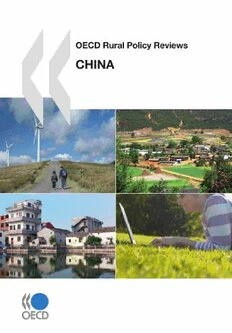
OECD Rural Policy Reviews OECD Rural Policy Reviews: China PDF
262 Pages·2009·6.01 MB·English
Most books are stored in the elastic cloud where traffic is expensive. For this reason, we have a limit on daily download.
Preview OECD Rural Policy Reviews OECD Rural Policy Reviews: China
Description:
With more than 700 million residents living in rural areas, China is still a predominantly rural country. But despite substantial improvements in standards of living, the Chinese countryside is largely lagging behind. This report analyses the key socio-economic forces at work in China's rural areas and discusses the current government strategy for rural development. It argues that in order to bridge rural-urban divides the current policy approach needs to go further in recognising rural-urban complementarities beyond agriculture and that food-security targets need to be balanced with wider rural development objectives. Table of Content : Acronyms and Abbreviations Terms in Chinese Assessment and Recommendations Chapter 1. Profile of Rural China -Key Points -Population and Migration -Socioeconomic Trends -Service Delivery: Access and Quality -Economic Structure and Performance -Unexploited Potential and Environmental Threats -Summary -Annex 1.A1. Additional Boxes, Tables and Figures -Annex 1. A2. Measuring Rural in China Chapter 2. Policy Assessment -Key Points -Approach to Rural Policy -Rural Policy and Government Challenges -Annex 2.A1. Additional Boxes, Tables and Figures Chapter 3. Policy Recommendations -Key Points -Multi-Level Governance -Land Use -Service Delivery -Economic Diversification -Environmental Protection -Summary -Annex 3.A1. Additional Good Practice Boxes -Anenx 3.A2. Laws, Provisions, and Central Documents Related to Chinese Rural Land Use Policy Bibliography
See more
The list of books you might like
Most books are stored in the elastic cloud where traffic is expensive. For this reason, we have a limit on daily download.
